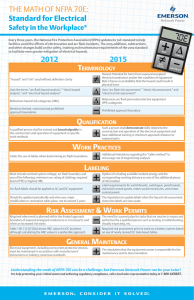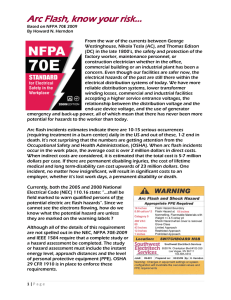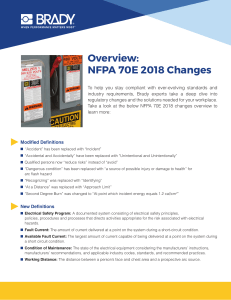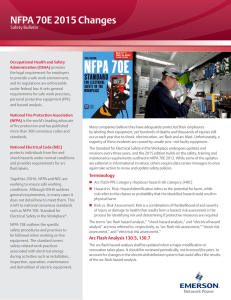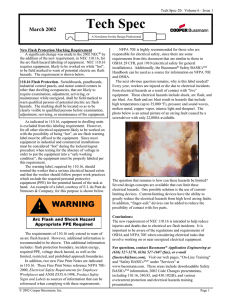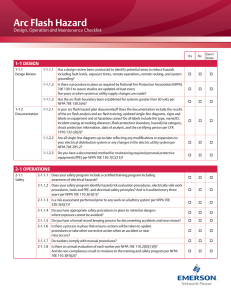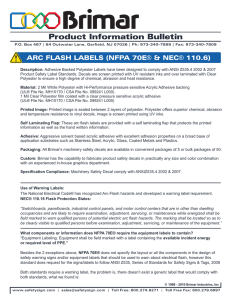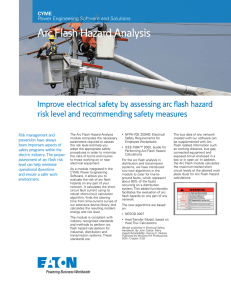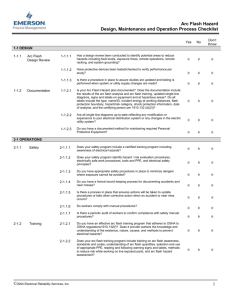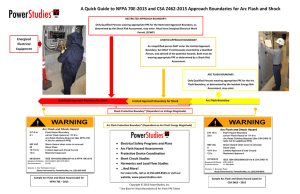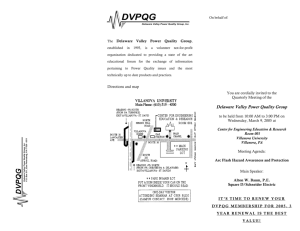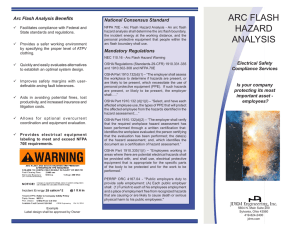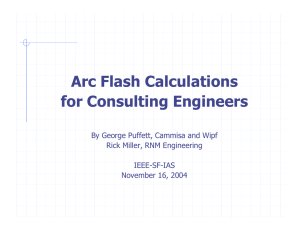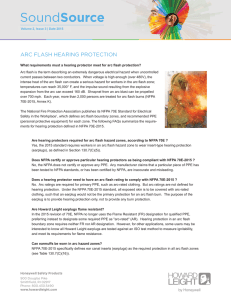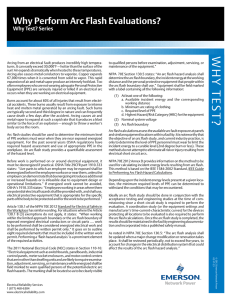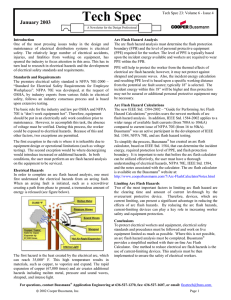doc - Stanford University
advertisement
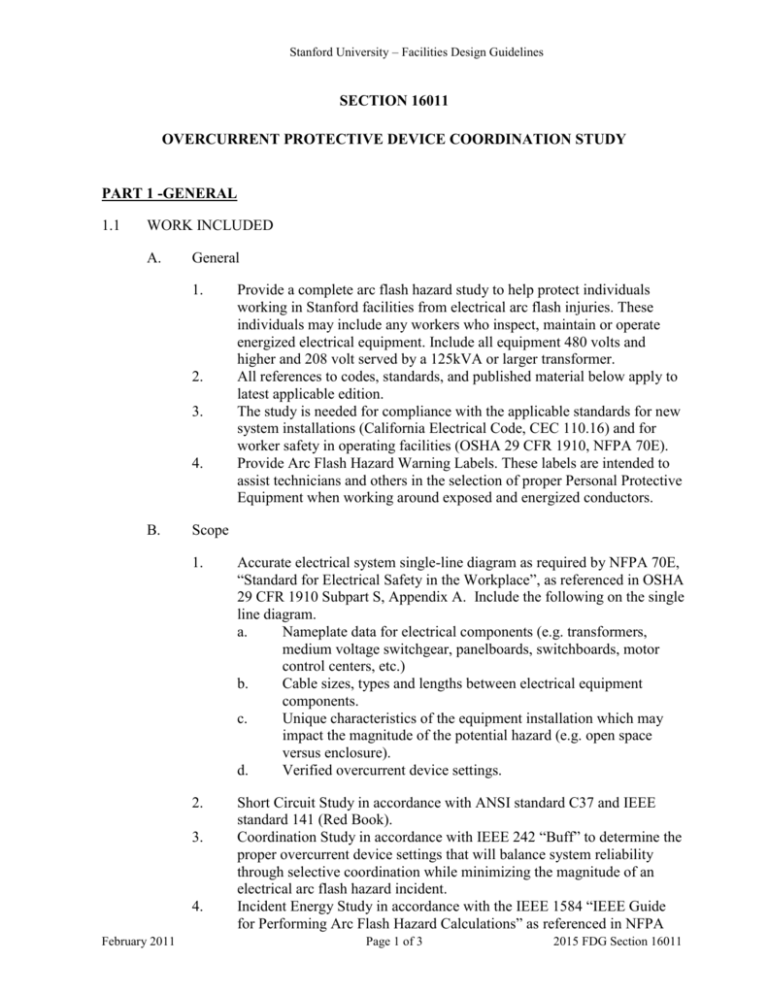
Stanford University – Facilities Design Guidelines SECTION 16011 OVERCURRENT PROTECTIVE DEVICE COORDINATION STUDY PART 1 -GENERAL 1.1 WORK INCLUDED A. General 1. 2. 3. 4. B. Scope 1. Accurate electrical system single-line diagram as required by NFPA 70E, “Standard for Electrical Safety in the Workplace”, as referenced in OSHA 29 CFR 1910 Subpart S, Appendix A. Include the following on the single line diagram. a. Nameplate data for electrical components (e.g. transformers, medium voltage switchgear, panelboards, switchboards, motor control centers, etc.) b. Cable sizes, types and lengths between electrical equipment components. c. Unique characteristics of the equipment installation which may impact the magnitude of the potential hazard (e.g. open space versus enclosure). d. Verified overcurrent device settings. 2. Short Circuit Study in accordance with ANSI standard C37 and IEEE standard 141 (Red Book). Coordination Study in accordance with IEEE 242 “Buff” to determine the proper overcurrent device settings that will balance system reliability through selective coordination while minimizing the magnitude of an electrical arc flash hazard incident. Incident Energy Study in accordance with the IEEE 1584 “IEEE Guide for Performing Arc Flash Hazard Calculations” as referenced in NFPA 3. 4. February 2011 Provide a complete arc flash hazard study to help protect individuals working in Stanford facilities from electrical arc flash injuries. These individuals may include any workers who inspect, maintain or operate energized electrical equipment. Include all equipment 480 volts and higher and 208 volt served by a 125kVA or larger transformer. All references to codes, standards, and published material below apply to latest applicable edition. The study is needed for compliance with the applicable standards for new system installations (California Electrical Code, CEC 110.16) and for worker safety in operating facilities (OSHA 29 CFR 1910, NFPA 70E). Provide Arc Flash Hazard Warning Labels. These labels are intended to assist technicians and others in the selection of proper Personal Protective Equipment when working around exposed and energized conductors. Page 1 of 3 2015 FDG Section 16011 Stanford University – Facilities Design Guidelines 70, “Standard for Electrical Safety in the Workplace”, in order to quantify the hazard for selection of personal protective equipment (PPE). Tables that assume fault current levels and clearing time for proper PPE selection are not acceptable. PART 2 -SUBMITTALS 2.1 2.2 COMPREHENSIVE REPORT THAT INCLUDES: A. Report summary with analysis methodology, findings and recommendations. B. Summary of input data for utility source, equipment and cables. C. Available fault current at each equipment location with comparison to equipment rating. D. Overcurrent device settings (e.g. pick-up, time delay, curve). E. Incident energy level (calories/cm2) for each equipment location and recommended PPE. F. Overcurrent device coordination curves including related section of the singleline diagram. LABELS A. Installed warning labels (orange <40 cal/cm2) or danger label (red > 40 cal/cm2c) in accordance with ANSI Z535.4. The label must be readable in both indoor and outdoor environments for at least 3 years and contain the following information (see sample label, attached); 1. 2. 3. 4. 5. 6. 7. 8. 9. 10. Arc hazard boundary (inches). Working distance (inches). Arc flash energy at the working distance (calories/cm2). PPE category with reference to NFPA 70E definitions. Voltage rating of the equipment. Limited approach distance (inches). Restricted approach distance (inches) Prohibited approach distance (inches) Equipment/bus name. Date prepared. PART 3 -EXECUTION 3.1 QUALITY ASSURANCE A. February 2011 Provide all necessary material, equipment, labor, and technical supervision to perform the arc flash hazard analysis. Page 2 of 3 2015 FDG Section 16011 Stanford University – Facilities Design Guidelines 3.2 B. Utilize engineers and technicians that are experienced and regularly perform electrical power system testing. C. Personnel performing the arch flash analysis shall be trained and experienced in accordance with NETA Training Specifications concerning the apparatus and systems being evaluated. LABELS: (SAMPLE) END OF SECTION February 2011 Page 3 of 3 2015 FDG Section 16011

